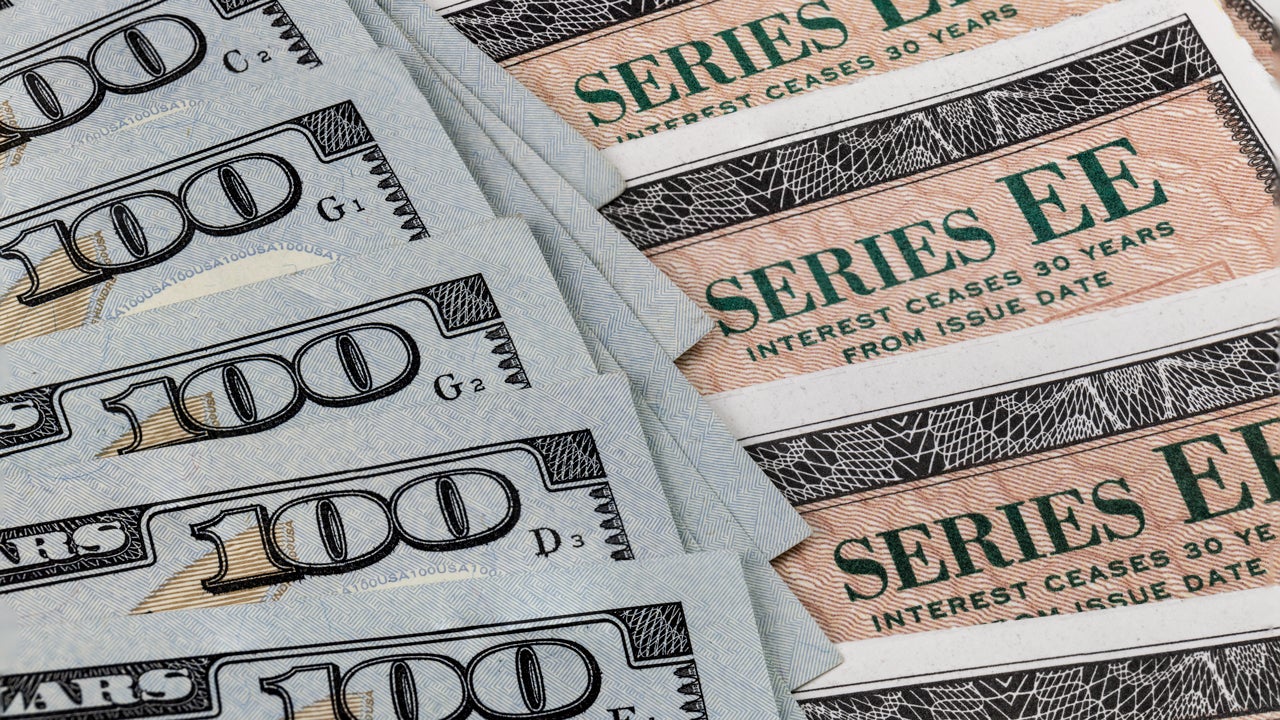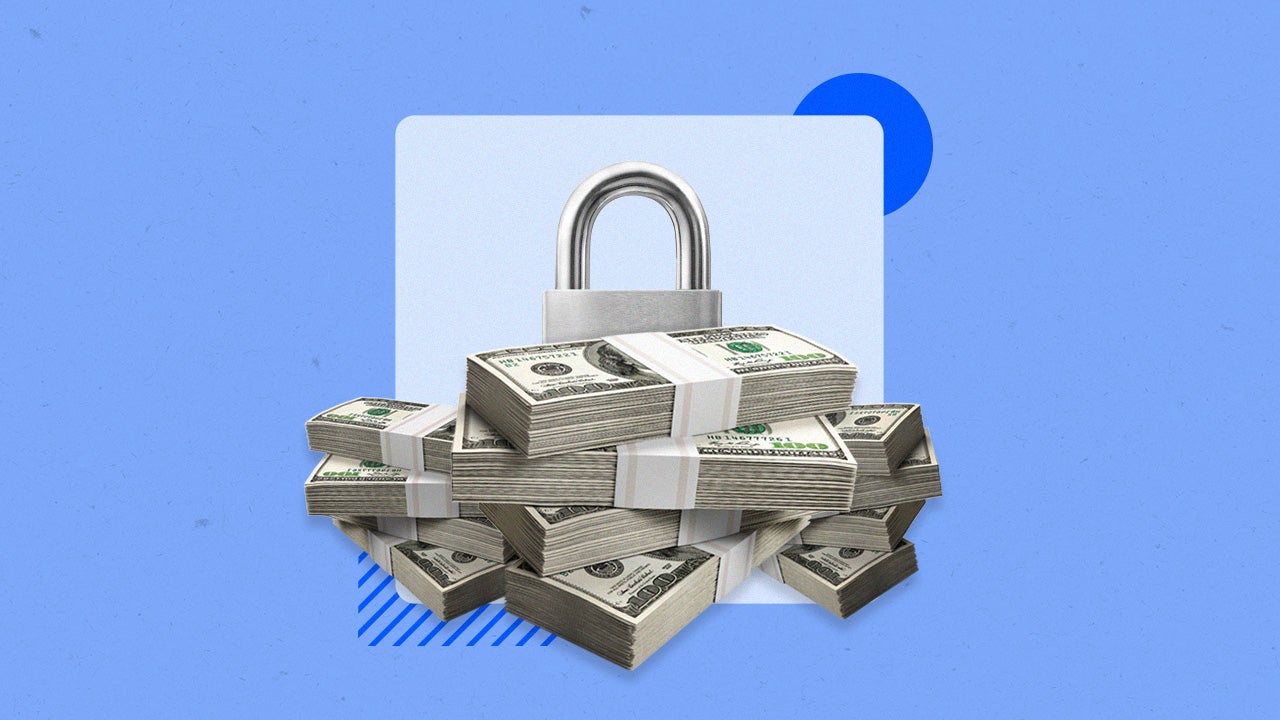Saving for retirement with CDs

Certificates of deposit are often popular with retirement investors, thanks to their guaranteed return and federally insured backstop. CDs may fit the bill if you’re nearing retirement and wish to keep some funds in an investment that won’t risk delaying your retirement due to market volatility.
CDs have a guaranteed rate of return, so they can help balance out a retirement portfolio that also contains riskier investments in equities, exchange-traded funds, or intermediate or long-term bonds.
Benefits of investing in CDs for retirement
Most CDs have a locked-in annual percentage yield, so you’ll know exactly how much they’ll be worth when their term ends.
Like many other types of deposit accounts, CDs can be insured up to $250,000 through the Federal Deposit Insurance Corp. or the National Credit Union Administration, guaranteeing your money is safe in the event of a bank failure, provided your account is within the set limits and guidelines.
Drawbacks of investing in CDs for retirement
Though CDs carry benefits like a guaranteed return, they expose investors to other types of risk, most notably inflation. Money locked in a CD can lose its purchasing power over time as overall costs for goods and services rise at a higher rate than the yield.
Another potential downside to locking your money in a CD is you won’t be able to access the funds early, if needed, without paying an early withdrawal penalty.
Who should invest in CDs for retirement?
The guaranteed rate of a CD makes it a viable option for investors with low risk tolerance, since you won’t lose principal or interest if you leave the funds untouched for the complete term.
Many savers who are approaching retirement choose to add CDs to their portfolios to help balance out investments that carry higher levels of risk, such as stocks, bonds, ETFs or mutual funds.
Who shouldn’t invest in CDs for retirement?
Unlike investments in the stock market, CDs don’t have the potential for large returns, given the current rate environment. If you’re younger, you may wish to stash your funds in other types of accounts that can earn significantly more interest over the long run.
Anyone considering adding CDs to their retirement savings shouldn’t use funds that might be needed before the CDs mature. Early withdrawals could result in hefty penalties, the amount of which varies based on the bank and the CD’s term length. Money that might be needed in an emergency is better off in a liquid savings account.
Ways to save for retirement with CDs
IRA CDs
An IRA CD is a CD that is held in an individual retirement account, with options that include a traditional IRA or a Roth IRA. These two types of accounts have different tax advantages, and tools like Bankrate’s IRA calculator can help you compare them and determine which would be right for your retirement plan.
One difference between traditional and Roth IRA CDs is contributions to a traditional IRA CD may be tax deductible, whereas contributions to a Roth IRA CD aren’t.
CD ladders
A CD ladder is an investment strategy of opening several CDs at once that have staggered terms. The plan allows you to reap the high-yield benefits of longer-term CDs, while providing access to some of your money sooner for investment elsewhere should rates rise.
An example would be opening up five CDs with a total of $5,000:
- $1,000 in a one-year CD with an APY of 0.7 percent.
- $1,000 in a two-year CD with an APY of 0.9 percent.
- $1,000 in a three-year CD with an APY of 1 percent.
- $1,000 in a four-year CD with an APY of 1.1 percent.
- $1,000 in a five-year CD with an APY of 1.2 percent.
As each CD matures, you can continue adding the funds to new short- or long-term CDs, or you can choose to invest the money in other retirement vehicles for better returns. In the current rising rate environment, however, experts recommend investors park their cash in shorter-term CDs, to take advantage of higher rates when CDs renew or the funds are reinvested in a new CD.
How flexible are CDs?
A CD often pays a higher return than a liquid savings account, in return for agreeing to lock in the funds for a set term. You can access the money sooner if needed, but you’ll often be subjected to a substantial early withdrawal penalty.
Ways to take advantage of CDs without locking in funds include:
- CD laddering: As mentioned, CD laddering allows you to earn the favorable rates of CDs without tying up all of the funds for the long term.
- No penalty CDs: Also known as liquid CDs, no-penalty CDs generally pay a fixed APY and give you the ability to withdraw the money without penalty before the term expires. The biggest drawback is you’ll usually earn a lower rate than you would with regular CDs.
Tax implications of investing in CDs for retirement
Regular and no-penalty CDs: Interest earned on these accounts is treated by the IRS as ordinary income in the year it becomes available to you, regardless of whether you take the money as cash or reinvest it in a new CD.
Traditional IRA CDs: These accounts allow you to defer paying income taxes on the money you contribute until you start to make withdrawals in retirement. What’s more, contributions may be tax deductible, if you qualify.
With traditional IRA CDs, if you tap into the funds before the term ends and before you turn 59½, you may be hit with both an early withdrawal penalty from the bank and a 10 percent early withdrawal tax.
Roth IRA CDs: Unlike traditional CDs, contributions to a Roth IRA CD are made with after-tax earnings rather than paying taxes when the funds are withdrawn. For this reason, contributions to a Roth IRA CD aren’t tax deductible.
Alternatives to CDs for retirement savings
Various investment options are available that can be used in addition to — or as alternatives to — CDs when saving for retirement.
1. Your employer’s 401(k) plan
Many financial experts recommend saving 10 to 15 percent of your pay in a 401(k) plan, if one is available through your employer. These tax-advantaged retirement accounts are funded by deductions taken automatically from your paycheck. As a benefit, many companies match employee contributions up to 4 or 5 percent. It’s important for participants in a 401(k) plan to choose an investment allocation that’s in line with their goals, timeline and comfort with risk.
2. Target-date funds
Target-date funds are convenient for savers who’d rather not actively manage their retirement portfolio. You input your planned retirement year, and the fund does the work by becoming more conservative as you get older, transitioning from riskier investments, like stocks, to more conservative ones, like bonds.
3. Treasury Inflation-Protected Securities (TIPS)
TIPS are a form of government bonds with an interest rate that fluctuates along with inflation as measured by the consumer price index. Backed by the federal government, they’re considered a highly safe investment, and they pay a fixed interest rate twice a year plus an inflation adjustment on a semiannual basis.
Bottom line
CDs can be a safe component of an investment portfolio, thanks to their guaranteed rate and FDIC insurance coverage. They’re a viable option of investors nearing retirement, who wish to shield some of their assets from stock market volatility.






